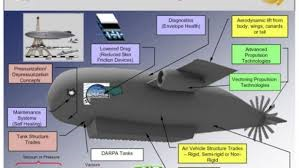
Breaking News
 Mike Rowe appears to be receiving flak for daring to explore the potential dangers of vaccines...
Mike Rowe appears to be receiving flak for daring to explore the potential dangers of vaccines...
 How to Keep Potatoes Fresh for a Year!
How to Keep Potatoes Fresh for a Year!
 A high school student has amazed the global science community with a discovery...
A high school student has amazed the global science community with a discovery...
Top Tech News
 The 6 Best LLM Tools To Run Models Locally
The 6 Best LLM Tools To Run Models Locally
 Testing My First Sodium-Ion Solar Battery
Testing My First Sodium-Ion Solar Battery
 A man once paralyzed from the waist down now stands on his own, not with machines or wires,...
A man once paralyzed from the waist down now stands on his own, not with machines or wires,...
 Review: Thumb-sized thermal camera turns your phone into a smart tool
Review: Thumb-sized thermal camera turns your phone into a smart tool
 Army To Bring Nuclear Microreactors To Its Bases By 2028
Army To Bring Nuclear Microreactors To Its Bases By 2028
 Nissan Says It's On Track For Solid-State Batteries That Double EV Range By 2028
Nissan Says It's On Track For Solid-State Batteries That Double EV Range By 2028
 Carbon based computers that run on iron
Carbon based computers that run on iron
 Russia flies strategic cruise missile propelled by a nuclear engine
Russia flies strategic cruise missile propelled by a nuclear engine
 100% Free AC & Heat from SOLAR! Airspool Mini Split AC from Santan Solar | Unboxing & Install
100% Free AC & Heat from SOLAR! Airspool Mini Split AC from Santan Solar | Unboxing & Install
 Engineers Discovered the Spectacular Secret to Making 17x Stronger Cement
Engineers Discovered the Spectacular Secret to Making 17x Stronger Cement
The Walrus: the US Army contemplates building an aircraft the size of a football field

And that is what the US Army's Project Walrus is about – putting together an entire action unit of war machinery, with all the wiring and plumbing preinstalled, and placing it in the most strategic place. Whilst this would completely rewrite the way that war is conducted, the Walrus - a massive lozenge-shaped blimp the size of a football field capable of transporting 500 tons at a time - could offer solutions to myriad peacetime problems, opening land-locked countries to trade, enabling heavy construction materials to be delivered into urban centres with minimum disruption, freeing our highways of high volume, heavy loads, offering a more robust and agile air transportation network capable of absorbing disruptions due to weather or attack. Indeed, business logistics could again be completely rethought and streamlined because many physical transportation limits would no longer apply once a fleet of commercial walruses became available. The walrus does not require an airstrip and can land on water or on open ground.

 Wall Street wants to go 24/7
Wall Street wants to go 24/7

